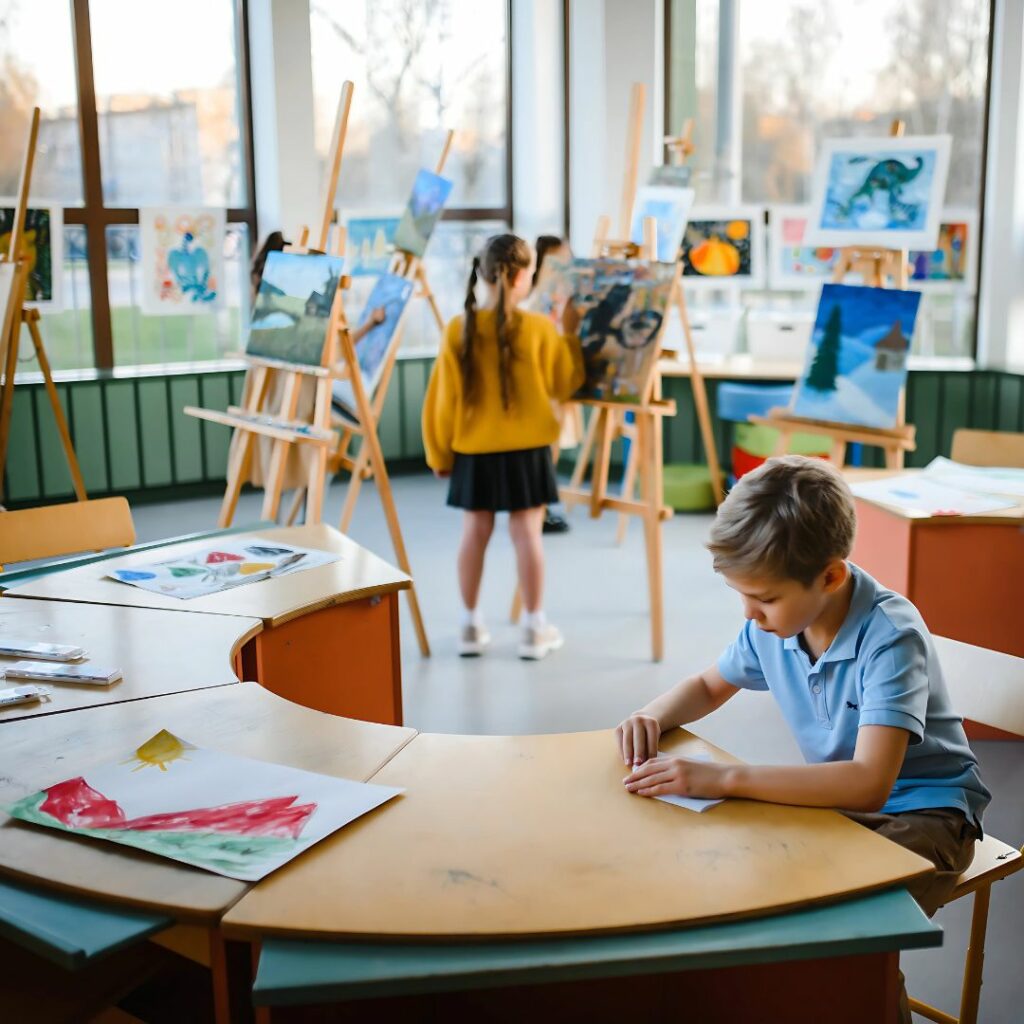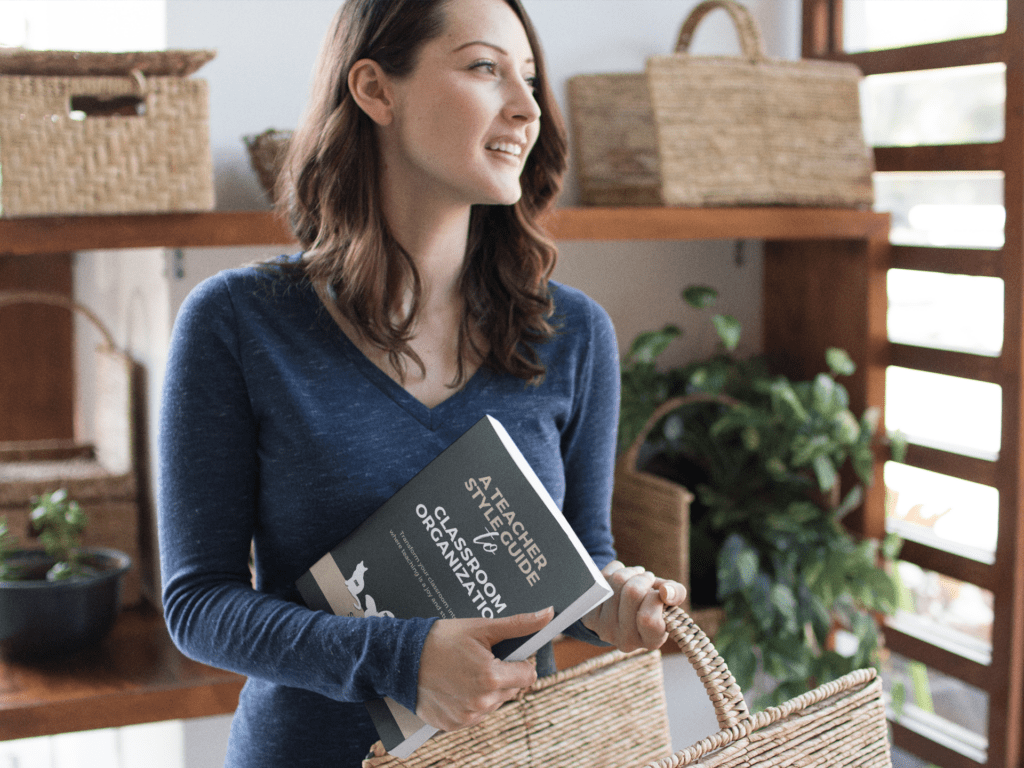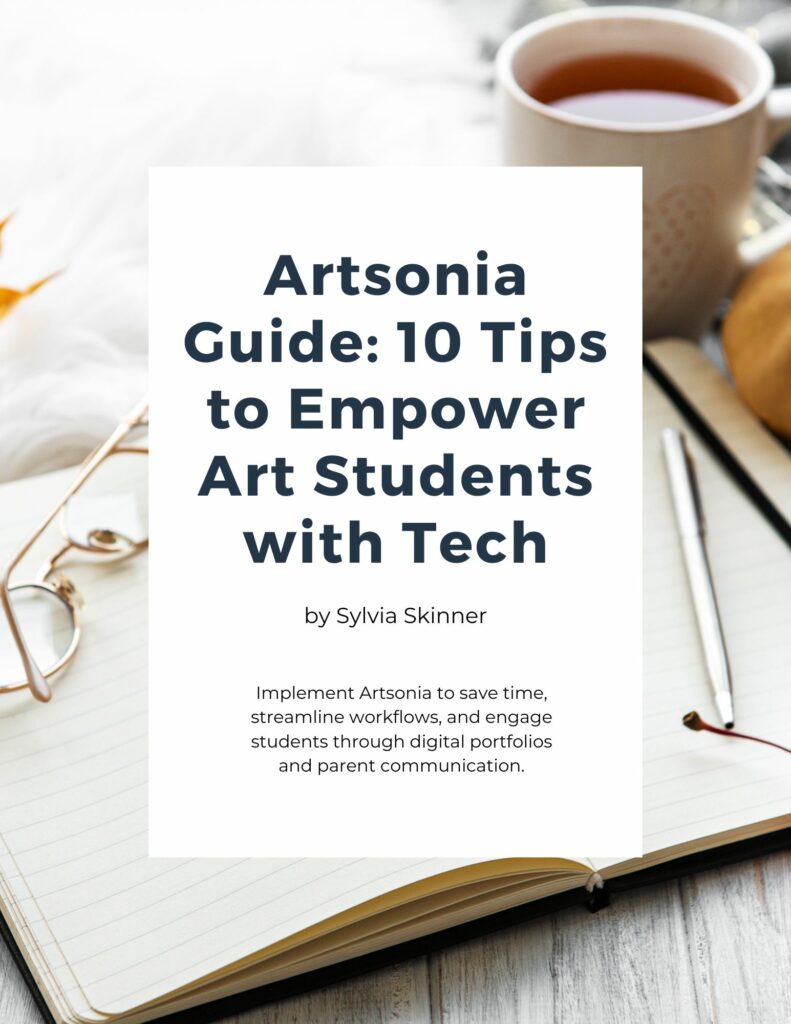How to Manage Your Art Room Effectively

Manage your art room like the master artist you are, transforming chaos into creativity. Every art teacher knows that a well-managed art room is the way to student success. Even if you’re secretly overwhelmed, know you’re not alone. It’s tough juggling the vibrant energy of creative minds with the need for order and structure. You might often think, “Surely, there’s a better way to manage your art room?”
Well, you’re in the right place to discover practical strategies that will streamline your classroom operations and enhance the creative output of your students. From simple greetings to effective digital tools, we’ll explore a spectrum of techniques designed to help you master the art of classroom management.
Set the stage for success
To effectively manage your art room, begin each day by creating a welcoming atmosphere. Stand at the door and greet your students with enthusiasm: “Welcome to the art room!” or “Good morning, artists!” This simple practice sets a positive tone and reinforces your presence as the leader of the room.
Start each lesson with an engaging hook to capture students’ attention—perhaps a fascinating fact about an art movement or a quick highlight of what makes the day’s project exciting. For instance, “Today, we’re exploring why Van Gogh’s techniques revolutionised portrait painting!” Such openings spark curiosity and lay the groundwork for active learning.
Follow up with a 10-minute silent drawing session to settle everyone, and let everyone sketch their ideas or it can be free drawing. It calms everyone and gets them in the zone.
Students often have very limited time in art class. Some only have 90 mins or less per week. So, it’s good to teach key routines like how to enter the art room, clean up, and line up at the start of the year to maximise that time.
Incorporate visual schedules and clearly labelled stations to make transitions smooth and expectations clear. This organised start reduces confusion and allows students to engage fully from the moment they step into the classroom, making your management efforts more effective and less stressful.

Streamline processes to manage your art room
Developing and maintaining consistent routines is essential in an art room or any classroom for that matter. Start by establishing a clear routine for how students should handle materials—where to collect them, how to use them, and where they go at the end of the lesson. This systematic approach helps you manage your art room effectively, maintaining order and fostering independence among students.
Implement a system for cleanup according to your teacher’s style. It could be that you nominate specific roles to students, such as ‘materials manager’ or ‘cleanup crew.’ Rotate these roles weekly to give all students a sense of responsibility and participation.
For me, I prefer the minimalist approach – each table is responsible for getting their materials back to where they should be and tables clean, within 3 to 5 mins. Points to each table who can do it quietly, correctly, and within the time. This works well for me but it might not for you. It all depends on your teacher’s style, which I discuss in my classroom organisation book.
By involving students in the upkeep of their environment, you not only manage your art room more efficiently but also enhance their learning experience. Acknowledge and praise students who follow procedures well: “This table is doing brilliantly with cleanup today—excellent teamwork!”
Organise your layout
Effective layout and organisation are pivotal in creating a classroom environment that inspires creativity and simplifies management. Start by designing a layout that maximises space and minimises disruptions. Arrange desks or tables to facilitate easy movement and quick access to materials, ensuring high-traffic areas remain clear to avoid congestion. This setup not only aids in maintaining order but also enhances safety.
Place essential materials and tools in accessible locations around the room. For instance, store commonly used items like scissors and glue in multiple stations to prevent bottlenecks during projects. Clearly defined zones for different activities—such as a wet area for painting and a dry area for drawing—help keep materials organised and ready for use.
Embrace technology
Embracing technology helps you manage your art room in today’s digital age. Tech can streamline administrative tasks, enhance creative projects, and improve communication.
Start by integrating tools like Artsonia. Students can upload and manage their artwork digitally, saving space and empowering them with control over their digital portfolios. Artsonia also offers a safe environment for students to showcase their work and receive feedback. It also enables you to review and provide feedback easily without managing piles of physical papers, saving time and space.
Consider incorporating apps like Procreate for digital art projects. While not strictly a classroom management tool, Procreate simplifies project setups and cleanups, shifting some activities to a digital realm. This reduces material costs and classroom clutter.
Explore classroom management software to track attendance, grades, and even behaviour. Many systems offer mobile apps, ensuring you can stay organised even outside the classroom.
To help you maximise Artsonia’s potential, check out our detailed Artsonia Guide: 10 Tips to Empower Art Students With Tech. This article outlines the platform’s key features, benefits, and practical tips for integrating it seamlessly into your classroom. If you prefer you can download it as a PDF to read later.

Download the Artsonia Guide for FREE!
Want a handy copy of this guide? Download the full Artsonia Guide: 10 Tips to Empower Art Students With Tech as a 27-page PDF. Perfect for quick reference, sharing with colleagues, or keeping in your teacher resources library.
Members only can access it.
Foster inclusivity
Inclusive practices are essential to manage your art room effectively. Implement visual schedules and clear, easy-to-understand instructions to assist students who struggle with verbal directions. Ensure your classroom layout accommodates all students, including those with physical disabilities, by maintaining wide pathways and accessible resources.
Consider the sensory needs of your students by creating areas with varying levels of stimulation. For example, establish a quiet corner with reduced visual clutter for students who may feel overwhelmed. Using technology like Artsonia provides a digital platform for students to express creativity, particularly for those who excel in alternative communication methods.
These inclusive approaches not only make your art room more accessible but also foster a learning environment where every student feels valued and supported.
Involve students
Empowering students by involving them in classroom management can dramatically enhance dynamics. Assign specific roles like ‘materials manager’ or ‘tech assistant’ to build leadership skills and a sense of ownership.
This strategy not only helps in maintaining order but also builds leadership skills among students. Encourage them to take these roles seriously by recognising their efforts publicly, which can motivate others to participate enthusiastically.
Involvement turns routine tasks into learning opportunities. For instance, students can help set up activities or manage materials. Or let students arrange displays of artwork in different parts of the art room. Regularly rotate these responsibilities to ensure all students have opportunities to contribute, fostering a collaborative and inclusive environment.
Overcome challenges
Art rooms often face unique challenges, from behaviour issues to supply shortages. Address these proactively with prepared solutions. For example, handle behaviour problems with the “broken record” technique—calmly repeat key directives ie “When I’m speaking, you’re listening” to reinforce expectations without escalating tensions.
Track supply usage with an inventory system to prevent shortages. This proactive management prevents disruption of class projects and aids in budget planning. For classes that have difficulty with behaviour or focus, having materials prepared and distributed at each table minimises unnecessary movement and keeps students engaged with the task at hand.
Address varied skill levels by incorporating tiered assignments that allow students to choose projects that match their abilities, thereby reducing frustration and encouraging a sense of accomplishment. Use positive reinforcement, such as praising good teamwork, to subtly motivate students and enhance the classroom atmosphere.

Manage time effectively
Time management is key to ensuring each art lesson is productive. Start each class with a clear agenda to set expectations. Use timers for activities to maintain pace, adding an element of fun with gentle competition.
Incorporate structured time for setup and cleanup to teach respect for resources and peers. This not only maintains order but also maximises the time available for actual art-making activities. The more time students have to complete art activities the better.
Include buffer times in lesson plans to adapt to unexpected delays or extended interest in particular projects. This flexibility allows you to adapt without sacrificing the structure, ensuring that every class runs smoothly and that every student’s creative needs are met. But that can be easier said than done. We love getting our art projects done just don’t kill yourself trying to accomplish it all. I speak from experience.
Commit to continuous improvement
A dynamic classroom is one that continually evolves. Start by implementing a simple feedback mechanism to encourage students to express their thoughts on the classroom environment and teaching methods. Some use forms but I converse with students and listen to what they have to say about the classroom the activities etc;
As you collect and analyse this feedback, use it to manage your art room. Adjust lesson plans, teaching techniques, and even classroom layouts based on the suggestions and comments received. Make sure to balance this with your understanding of what will work as a teacher. Implementing student suggestions shows responsiveness and fosters a collaborative atmosphere.
Regularly review your practices to align with current educational trends and student needs, ensuring your teaching remains fresh and effective. This commitment to continuous improvement fosters an adaptable, engaging, and responsive teaching environment.
Plan for the long-term
Developing long-term strategies sustains effective classroom management. Set annual goals tailored to your school’s objectives and your students’ needs. Goals might include enhancing digital literacy, fostering collaboration, or integrating sustainability into projects.
Review and revise your strategies annually to identify successful practices and areas for improvement. Consider conducting an annual review of classroom practices and student outcomes. Invest in professional development through workshops and webinars to stay inspired and informed.
To support your planning, download our FREE Art Classroom Setup Checklist. This illustrated checklist helps you organise and prepare your art classroom for a new term. Print it and tick off each item as you go, ensuring a smooth start to your school year.
Craft your classroom masterpiece
Navigating the busy world of an art room can feel like orchestrating chaos. By adopting these strategies—from setting a welcoming tone to embracing digital tools—you create a space where teaching and creativity thrive.
Establish clear routines, leverage platforms like Artsonia, and optimise your classroom layout to support inclusive and efficient learning. To manage your art room well, engage students in managing their environment, fostering responsibility and collaboration. These systems ease your workload and enrich the learning experience, allowing you to focus on nurturing your students’ creative talents.
Here’s to crafting a vibrant, organised, and inspiring art classroom—your very own masterpiece.
